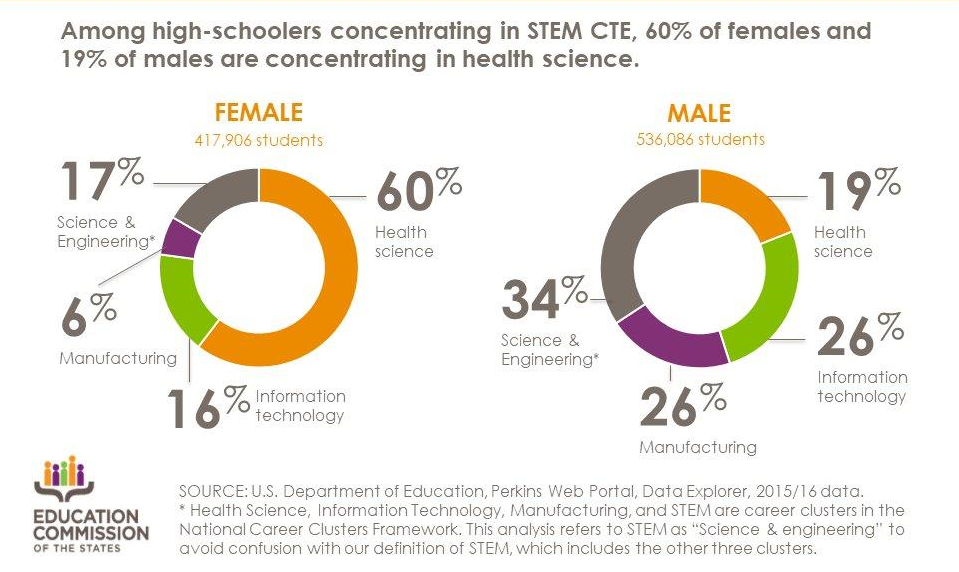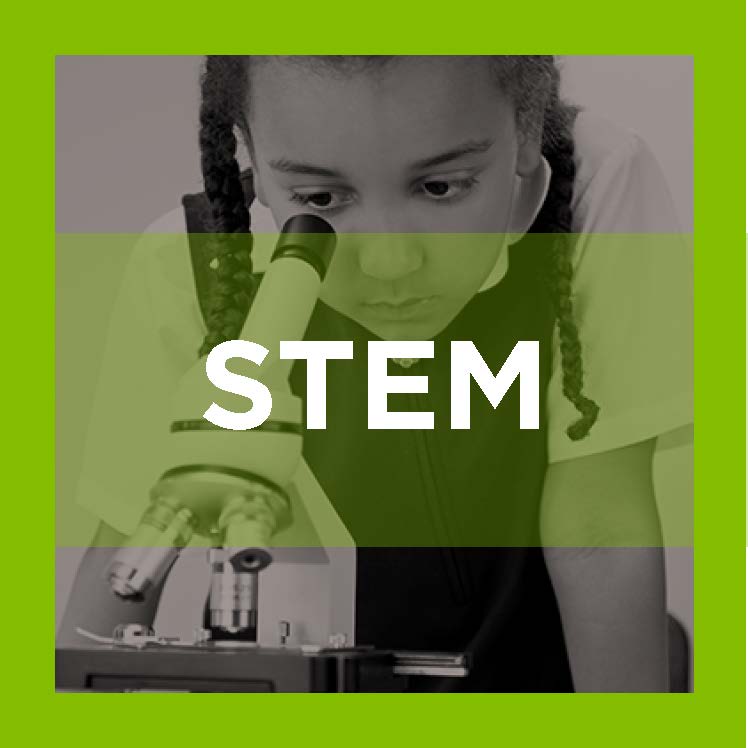Between 2016 to 2026, labor economists expect nearly 230,000 job openings each year for registered nurses (median wage: $68,450), nurse practitioners ($100,910) and physician assistants ($101,480). Each of these occupations requires strong STEM knowledge and skills, and in the coming decade, each will likely grow at least twice as fast as the average job.
But there’s a critical gender gap in these occupations, and that could hobble our economy. More than 90 percent of registered nurses and nurse practitioners are female, as are 70 percent of physician’s assistants.
As we mark Career and Technical Education (CTE) Month, it pays to consider how CTE can address this gender gap. As it stands, yawning gender gaps in high school CTE programs only threaten to entrench the problem. In 2015-16, 71 percent of high school CTE students who concentrated in health science were female. By contrast, a mere 27 percent of those who concentrated in science and engineering were female. This imbalance has barely budged in the nine years since the U.S. Department of Education began measuring these data.

The problem has its roots in elementary and secondary schools — but so do the solutions. College recruitment and adult education programs can attract men into the profession, but such worthy efforts address the consequences of the gender gap rather than its cause.
Federal law offers some help. The Carl D. Perkins Vocational and Technical Education Act of 2006 prompts states to measure progress toward goals for better gender balance in high school CTE enrollments. (A bill to reauthorize the act preserves much of this approach). This policy can certainly help (after all, we have Perkins to thank for data on the CTE gender gap), but if the past decade is any measure, it alone probably won’t solve the problem.
State and local leaders can pursue several strategies to address the problem. For example, they can expose boys to careers like nursing in elementary school career exploration events. They can train high school guidance counselors to understand the pathways that can lead male and female students to rewarding careers in health care. They can help CTE teachers combat the subtle, and often not-so-subtle, messages that turn boys away from nursing careers. And they can take a page from computer science advocates and work with major employers in health care to build public awareness campaigns that upend gender stereotypes.
Parts of this playbook may be familiar to STEM advocates who have led the charge for gender equity in engineering or computer science. (Some of their efforts seem to be paying dividends). Whether in computer science or nursing, the justification for these efforts is much the same: We cannot draw the lion’s share of talent from only half the population.










